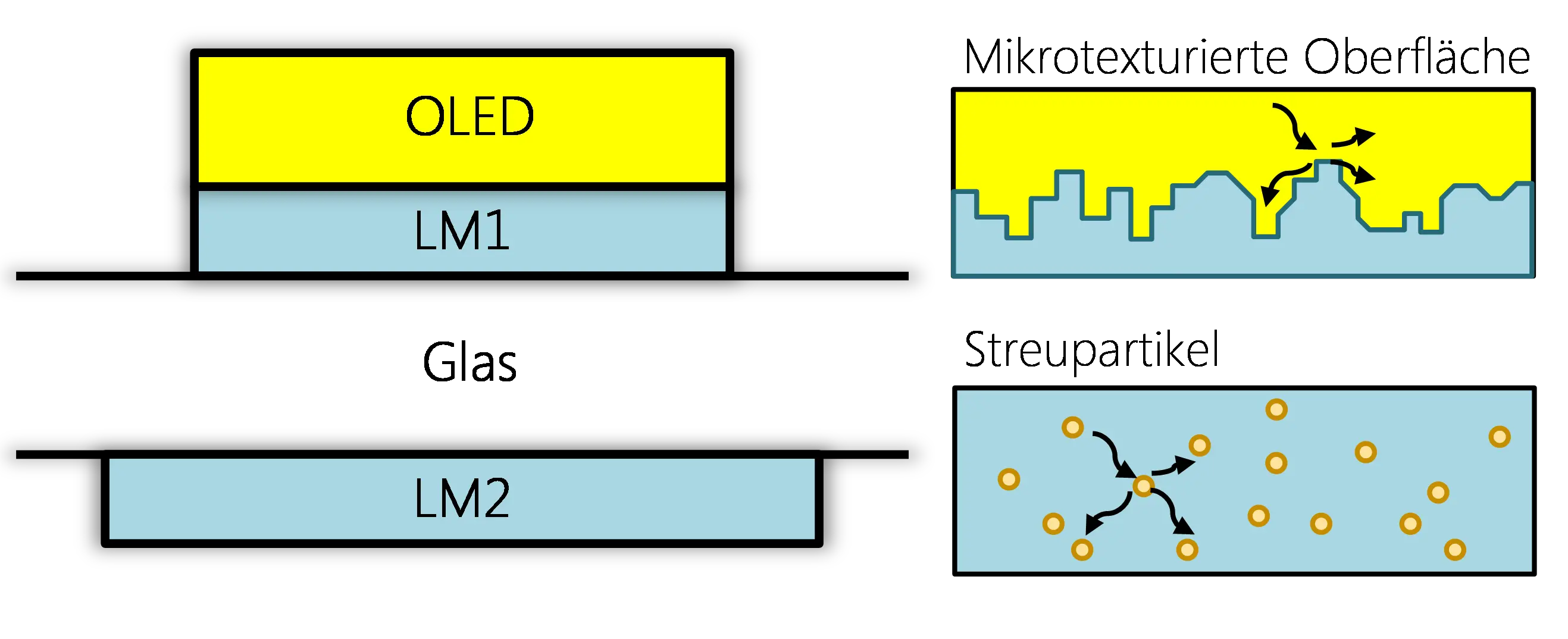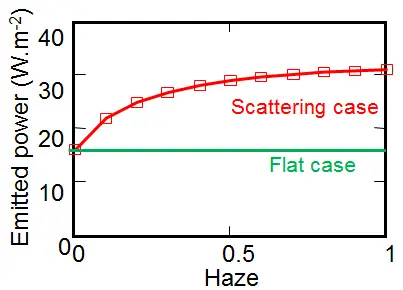Development of light-management layers for OLEDs
Organic light-emitting diodes are a future-oriented technology in the field of displays and lighting. To further increase efficiency, light management layers (LMS) are built into the OLEDs and software tools are used to design these LMS. In this project the software of Fluxim was further developed. It is now able to simulate certain types of such layers. This makes it possible to predict the optimal process parameters for the production of the LMS without lengthy experimentation.

In an OLED, light is generated in a layer with a high refractive index and emitted in all directions. When the light passes the glass substrate - which acts as a carrier for the OLEDs - part of the flat emitted light is reflected by total reflection at the glass surface and thus remains trapped in the glass. It therefore does not contribute to light generation. In cooperation with Glas Trösch and Fluxim, models and methods have been developed at the ICP to simulate the increase in efficiency that can be achieved with light management layers (LMS).
An OLED consists of several layers of carbon-based semiconductors. This layer sequence has to be optimized to achieve efficient OLEDs. If additional light management layers are to be used, it is advantageous to optimize the parameters of the LMS simultaneously with the parameters of the OLED, since OLED and LMS influence each other. Figure 1 shows a schematic cross-section of an OLED with the light management layers LM1 and LM2. These can be applied to the outside and/or inside of the glass substrate and consist, for example, of layers with scattering particles or microtextured surfaces.

The methods and procedures developed at the ICP have been integrated into the simulation software (Setfos) of Fluxim. This means that the entire layer structure, consisting of the individual OLED layers and the light management layers, can now be simulated and optimized. This makes it easier to find the ideal process parameters for the production of the LM layers, since not all possible LMS have to be produced and evaluated.
Only this simplified process made it practicable to calculate the effects of all possible combinations of the available LMS for a given OLED. Figure 2 shows an exemplary simulation result that illustrates how the decoupled light output can be increased with increasing turbidity of the LMS. Based on such calculations, the most advantageous LMS could be identified. This optimized LMS layer was produced by Glas Trösch and its use in OLEDs is currently being tested. Initial tests in the in-house laboratory have shown an increase in efficiency in OLEDs.
Within the scope of this project, the infrastructure for the measurement of angle-dependent light scattering properties of light management layers as well as the quantitative light extraction of OLEDs were also expanded at the ICP.